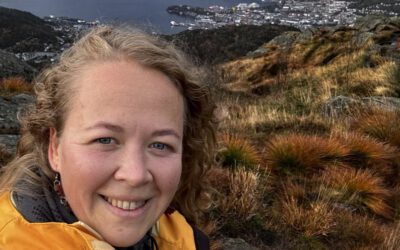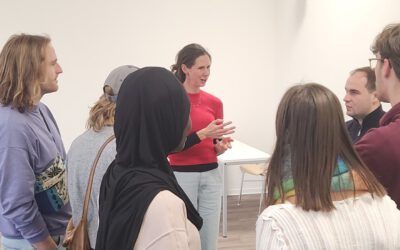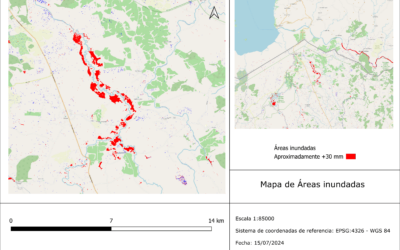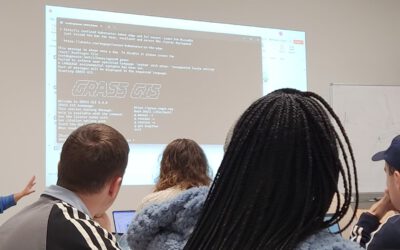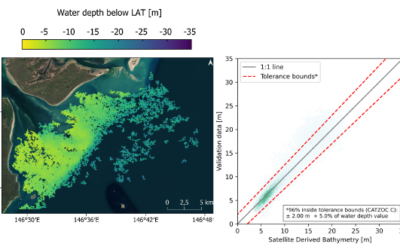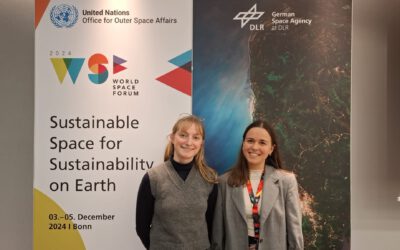Aim
Spectroscopy and hyperspectral remote sensing enables to retrieve very detailed spectral information about a certain surface in dense bandwith intervalls. Information on the “spectral fingerprints” of surfaces is then available in a near-continuous manner. This allows for the differentiation of materials, such different geologic surfaces, different urban materials, or plants of different composition and vigor. Especially field- and laboratory spectroscopy has shown many benefits, as measurements can be carried out in a controlled environment, and can be directly visualized and explained. This course provides you insights into practical experiments using a field spectrometer, and subsequent data analysis to assess key environmental parameters such as plant health, soil moisture content, and geologic composition.
Content
The content of this course includes both the theoretical background of field and imaging spectroscopy, as well as practical experiments and subsequent data analysis. In particular, we will adress: the theoretical background of field and imaging spectroscopy / general reflectance and transmittance properties of plant leaves, canopies and soils / the quantification of biophysical and biochemical properties using spectroscopic measurements, feature parametrization and regression analysis / the advantages and challenges of existing and planned hyperspectral spaceborne sensors
Coding
Software
Techniques
Content
General Course News and Updates
EAGLE Daria did her internship in Bergen
Our EAGLE student Daria recently wrapped up an internship at the University of Bergen in the Remote Sensing research group. With the support of her supervisor, Dr. Benjamin Abreu Robson, she got to work on the Jostedalsbreen glacier using drone and satellite data. Her...
EAGLE alumnus Henrik Fisser presenting polar research
Our EAGLE alumnus Henrik Fisser recently visited us after a research stay in the United States. He is now pursuing his PhD at UiT The Arctic University of Norway, specifically in the Earth Observation Department. UiT is renowned for its cutting-edge research in Earth...
Orfeo Toolbox covered in our courses
As part of our international EAGLE MSc courses, we include comprehensive training on the powerful Orfeo Toolbox (OTB) software. OTB is an open-source library for processing remote sensing imagery, offering advanced algorithms for tasks such as image segmentation,...
EAGLE Internship Presentation ” Research and development of data strategies for disaster management, early warning systems, and refugee data analysis”
On January 07, 2025, Sarah Schneider will present her internship " Research and development of data strategies for disaster management, early warning systems, and refugee data analysis" at 14:00 in seminar room 3, John-Skilton-Str. 4a. From the abstract: The...
Master Thesis Presentation “Animal Path Segmentation and Analysis via Deep Neural Network Regression”
On January 14, 2025, Konstantin Müller will defend his master thesis " Animal Path Segmentation and Analysis via Deep Neural Network Regression " at 12:00 in seminar room 3, John-Skilton-Str. 4a. From the abstract: Animals play a vital role for well-functioning...
Internship network fair
Today, we provided our international Eagle MSc students with access to the professional network of our EORC to assist them in finding suitable internships or MSc thesis topics. Several individuals offered their networks, including Hannes Taubenboeck for georisk and...
Internship Presentation: Application of synthetic aperture radar (SAR) data: Case study in flood mapping in Costa Rica and technical capacity building of the PRIAS team
On December 17, 2024, Ariana Sofía Argüello Cordero will present her internship " Application of synthetic aperture radar (SAR) data: Case study in flood mapping in Costa Rica and technical capacity building of the PRIAS team" at 12:00 in seminar room 3,...
GRASS software for Earth Observation
In our international EAGLE MSc program, we go beyond the limitations of a single programming language or software environment. Our goal is to empower students to leverage a wide range of scientific tools effectively. They gain insight into the strengths and...
Master Defense by Isabella Metz: ” Analysis of Uncertainties for Error Detection and Quantification of Bathymetry Data from Multispectral Sentinel-2 Imagery
On January 07, 2025, Isabella Metz will defend her master thesis on " Analysis of Uncertainties for Error Detection and Quantification of Bathymetry Data from Multispectral Sentinel-2 Imagery" at 13:00 in seminar room 3, John-Skilton-Str. 4a. From the abstract: In...
EAGLES rock(et) the World Space Forum 2024
Laura - 8th gen EAGLE and in the last week of her internship at UN-SPIDER - and Sunniva - 7th gen EAGLE and working as a student assistant at the DLR's space agency - together happen to help organize the World Space Forum (WSF) 2024 in Bonn. Surrounded by...

